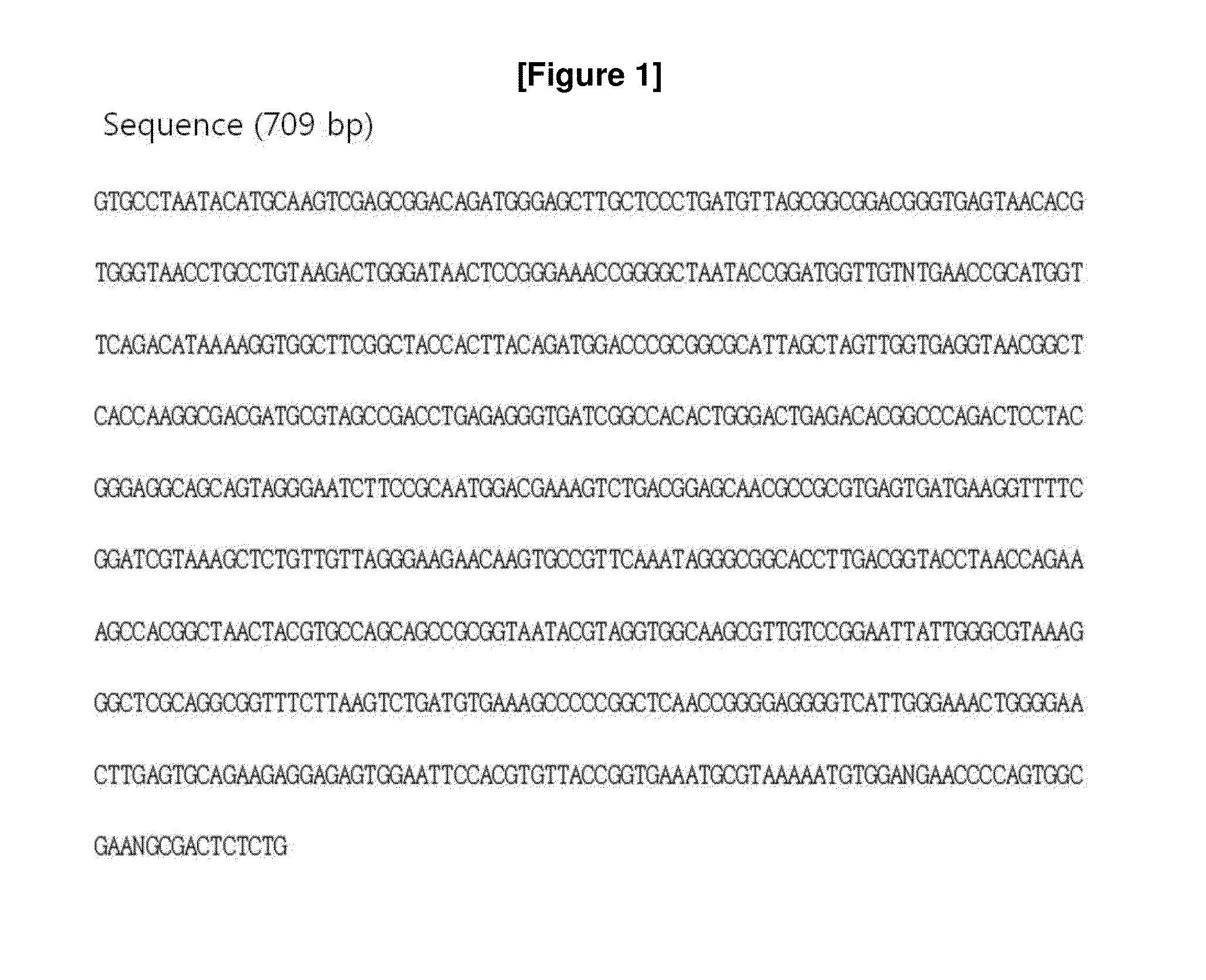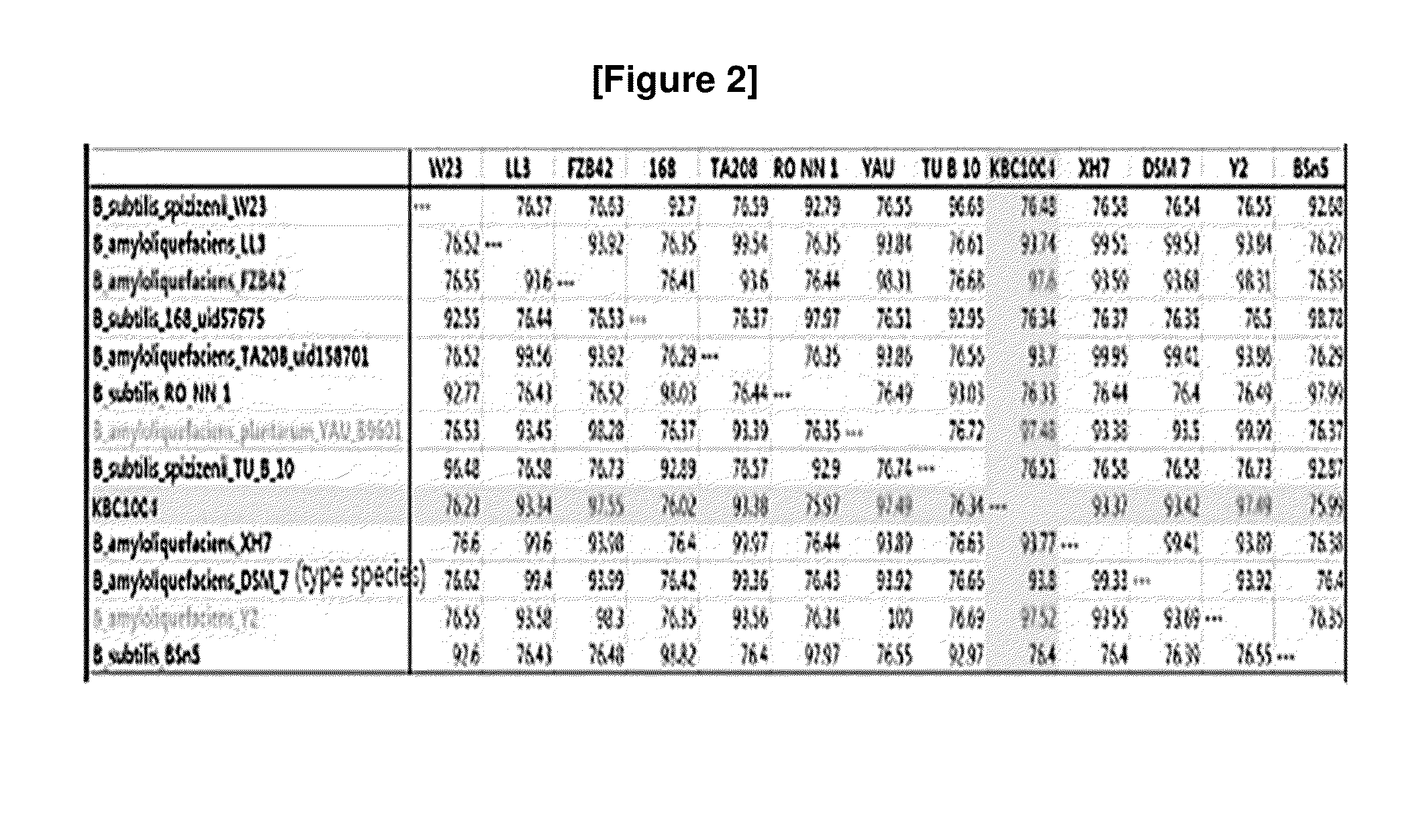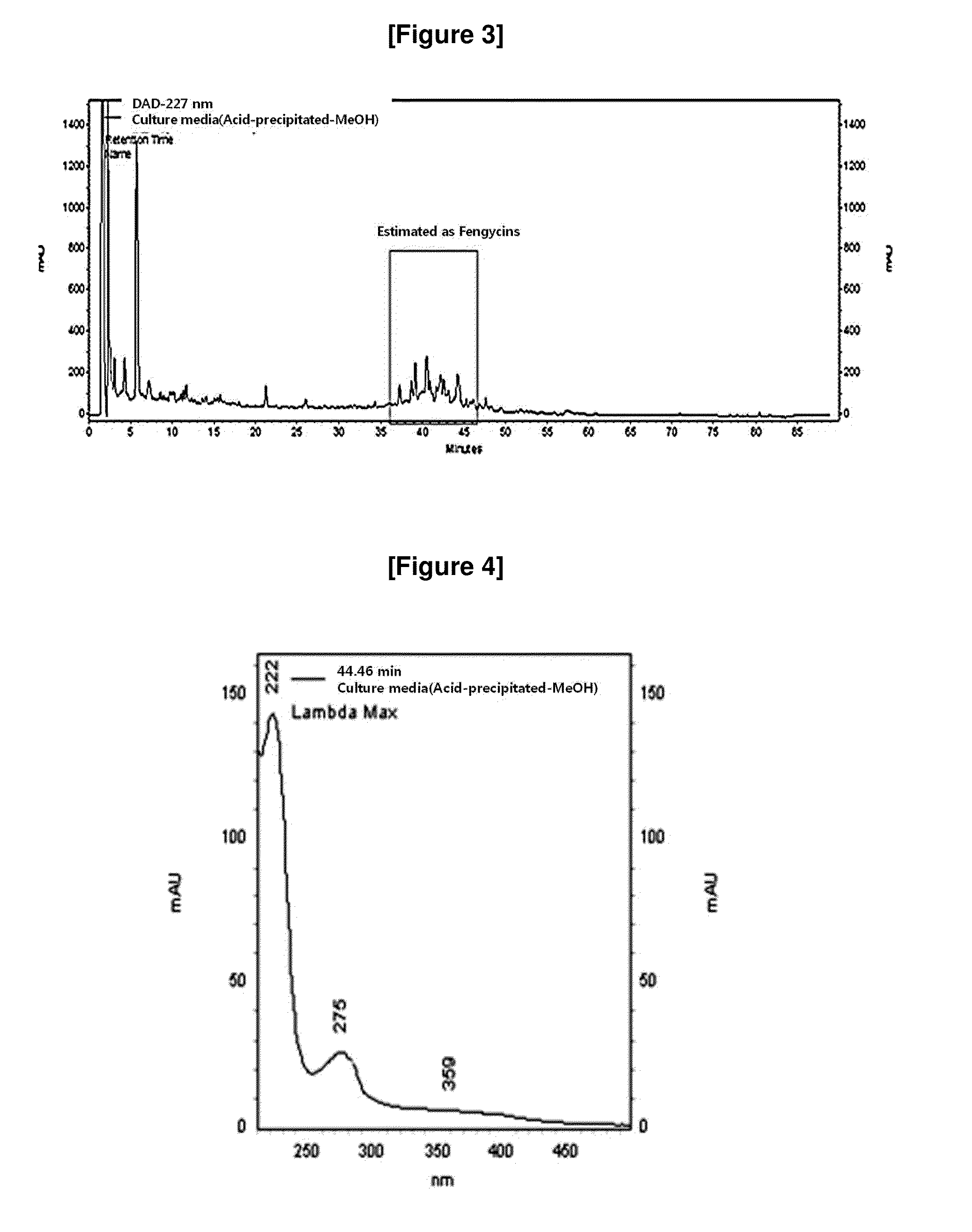Technique, Method, and Composition for Controlling Plant Pathogens
a technology for controlling plant pathogens and compositions, applied in the direction of microorganisms, biocide, bacteria based processes, etc., can solve the problems of short preservation period at room temperature, toxicity on animals, and pollution of soils, and achieve excellent antifungal activity.
- Summary
- Abstract
- Description
- Claims
- Application Information
AI Technical Summary
Benefits of technology
Problems solved by technology
Method used
Image
Examples
example 1
Isolation and Identification of Bacillus amyloliquefaciens KBC1004 Strain
[0069]A strain demonstrating excellent antibacterial activity was selected from the microorganisms collected from soil.
[0070]For the identification of the selected strain, the inventors asked Changwon University, Korea to analyze 16s rDNA sequence of the strain. As a result, the nucleotide sequence of FIG. 1 (SEQ. ID. NO: 1) was confirmed. Then, the inventors performed homology search by using NCBI GenBank database and confirmed its phylogenetic position. From the molecular phylogenetic analysis, the selected strain was identified as Bacillus amyloliquefaciens belonging to the Bacillus sp. phylogenetic group.
[0071]The isolated and identified strain was named Bacillus amyloliquefaciens KBC1004 and deposited at Korean Collection for Type Cultures (KCTC), Korea Research Institute of Bioscience and Biotechnology (KRIBB) on Jan. 18, 2013 (Accession No: KCTC 12355BP).
example 2
Sequencing and Analyzing Bacillus amyloliquefaciens KBC1004 Strain Genome
[0072]Sequencing and analyzing the Bacillus amyloliquefaciens KBC1004 strain genome were performed at Korea Research Institute of Bioscience and Biotechnology (KRIBB).
[0073]Particularly, 2×100 paired end sequencing was performed with the Bacillus amyloliquefaciens KBC1004 strain by using Hiseq2000 (Illumina). As a result, approximately 500 bp fragment sequence was obtained, from which 30,257,430 sequences (3.06 Gb) were readable. After trimming the sequence using CLC Genomics Workbench Ver. 5.5, the readable sequence in the average length of 93.9 bp (total 2.48 Gb) was prepared. The sequence of 9.909,052 bp was identified by De novo assembly and reference mapping. As a reference sequence, Bacillus amyloliquefaciens FZB42 (3,918,589 bp) was used for mapping.
[0074]The paired read was aligned to the scaffold structure resulted from De novo assembly to fill up the gap. The sequence that filled partially the gap was...
example 3
Biochemical Characteristics of Bacillus amyloliquefaciens KBC1004 Strain
[0078] Confirmation of the Enzyme Produced by Bacillus amyloliquefaciens KBC1004 Strain
[0079]The enzyme produced by the Bacillus amyloliquefaciens KBC1004 strain separated and identified in Example 1 was investigated.
[0080]Particularly, the enzyme productivity of the strain targeting 19 enzymes was investigated by using APi ZYM kit (BioMeriux, Lyon, France). According to the color changes, the level was defined from 0 to 5, precisely the negative reaction(−) is presented as 0 and when the obtained value is 3 or up it is judged as positive reaction(+).
[0081]As a result, as shown in Table 2, it was confirmed that the Bacillus amyloliquefaciens KBC1004 strain produced Esterase (C4) and Naphtol-AS-BI-phosphohydrolase (Table 2).
TABLE 2Enzyme activity of Bacillus amyloliquefaciens KBC1004 strainAPI 20 ZYMEnzymes detectablesResultEnzymes detectablesResultControl (Temoin sans substrate)−1)Acid phospatase (Phosphatases)−...
PUM
 Login to View More
Login to View More Abstract
Description
Claims
Application Information
 Login to View More
Login to View More - R&D
- Intellectual Property
- Life Sciences
- Materials
- Tech Scout
- Unparalleled Data Quality
- Higher Quality Content
- 60% Fewer Hallucinations
Browse by: Latest US Patents, China's latest patents, Technical Efficacy Thesaurus, Application Domain, Technology Topic, Popular Technical Reports.
© 2025 PatSnap. All rights reserved.Legal|Privacy policy|Modern Slavery Act Transparency Statement|Sitemap|About US| Contact US: help@patsnap.com



